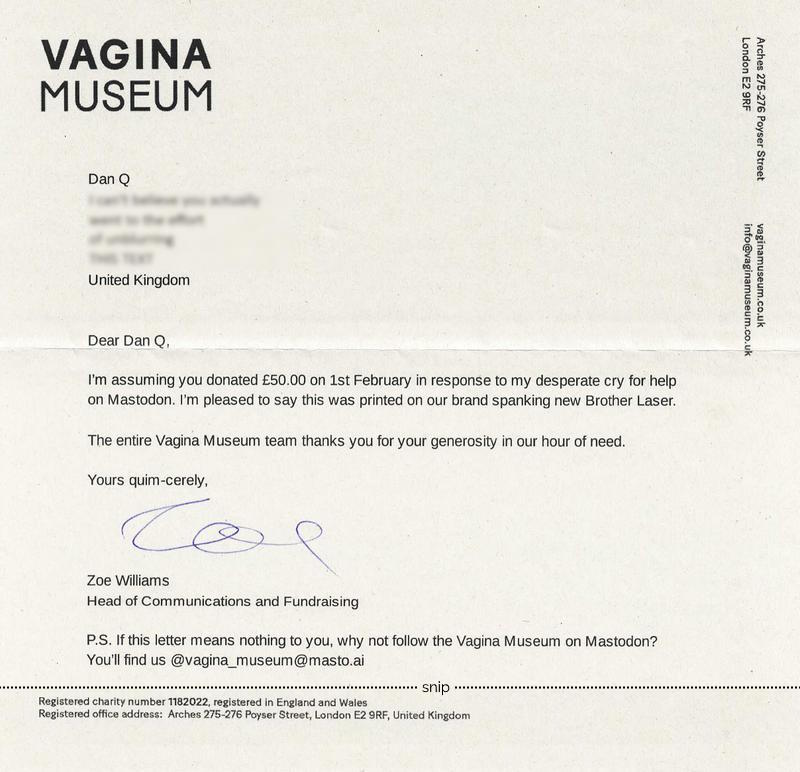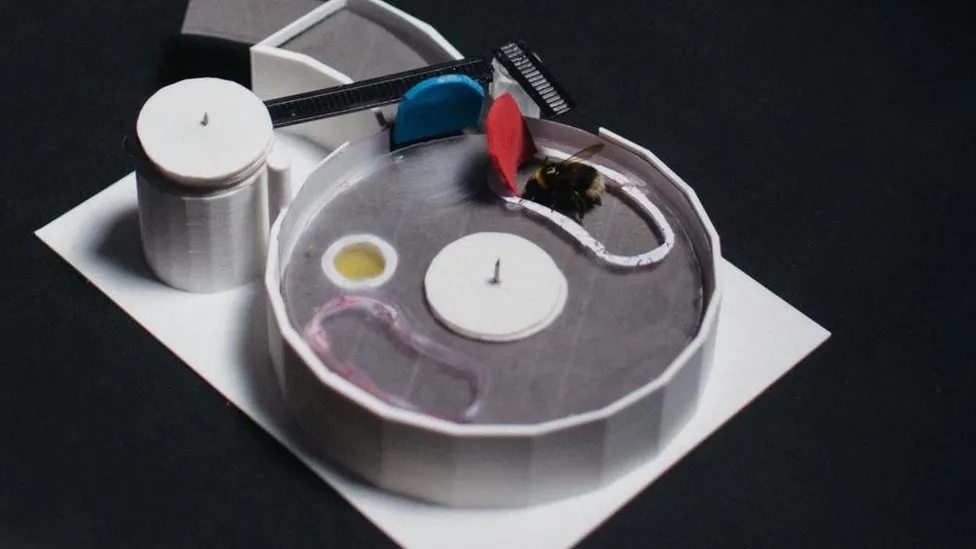A lovely letter from the Vagina Museum – which I’ve not had the opportunity to visit yet – came through my letterbox:

This moment of joy was kick-started when I casually dropped in on a conversation about printer recommendations. I’ve got a big ol’ Brother printer here, and it’s great, not least because even though it’s got a tonne of features like duplexing and (double-sided) scanning and photocopying and it’s even got a fax machine built in for some reason… it doesn’t try to be any more “smart” than it needs to be. It doesn’t talk to Alexa or order itself more toner (it even gets-by with knockoff toner!) or try to do anything well… except print things, which it does wonderfully.
For this and other reasons I recommended they buy a Brother.
Then, alongside some other Fediversians, I chipped in to help them buy one.
Totally worth it for the letter alone. Now I just need to find an excuse to visit an exhibition!
